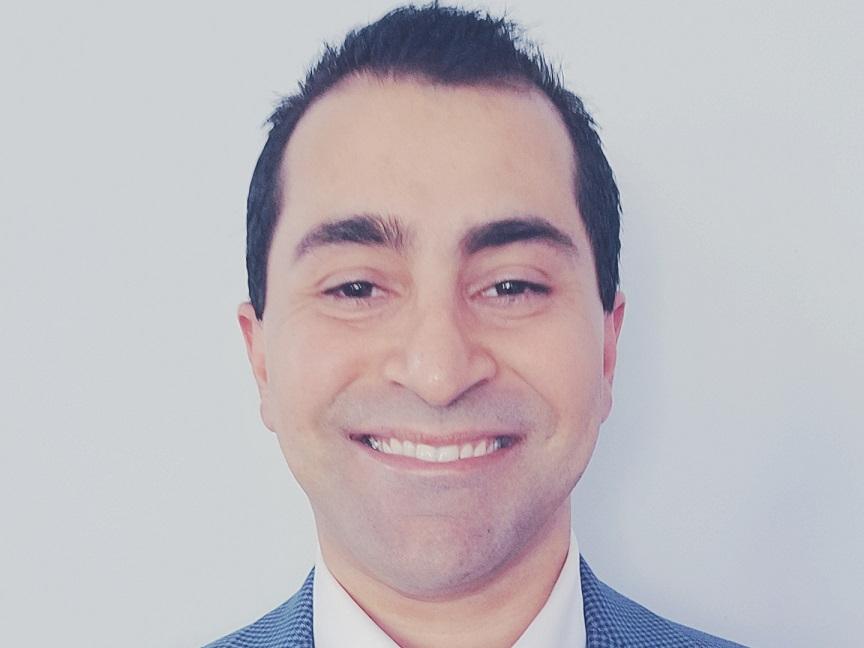
Kamiar “Mike” Hamidi
Associate Director, Global Clinical Data Standards
Merck & Co.
This spotlight was featured in June 2017.
Mike has served on various CDISC teams since 2010. His blend of enthusiasm, commitment and strong subject matter expertise have led him to positions of leadership and responsibility. He began volunteering for CDISC in 2010, providing input on the development of SDTM/SDTMIG and Medical Device Controlled Terminology.
He serves on the Study Data Standards (SDS) Leadership team and has been actively involved working with various SDS sub-teams and cross-team collaboration projects, including the following:
- Teams
- Submission Data Standards Leadership Team (SDSLT)
- Questionnaires, Ratings and Scales (QRS)
- Technical Leadership Committee (TLC)
- CDASH/SDS Joint Leadership Team
- Projects
- Supplemental Qualifiers & Non-Standard Variables
- SDTM Guiding Principles
- ODM Multiple Subject Instances
- Adjudication Project
- White Paper on FDA Guidance on Race and Ethnicity
- Metadata Submission Guidelines v2.0 (MSG)
- SDTMIG v3.3 Publication Team
- Multiple Dispositions per EPOCH & Informed Consents
- Cross Organizational
- Co-lead of the CDISC/PhUSE FAQ IG Nuances sub-team
Mike was first introduced to the industry working within regulatory operations in reviewing marketing application submissions and their respective content (i.e., CMCs, CSRs, Protocols, CRFs, etc.). This regulatory experience provided him an ability to work on various marketing applications (INDs, NDAs, BLAs) in various submission formats (Paper, Hybrid CTD, eCTD) provided to multiple global regulatory agencies (FDA, EMEA, PMDA, MHRA). His activities in regulatory also provided him a chance to work on the initial FDA pilots for both eCTD and Structured Product Labeling (SPL). This eventually led to his regulatory review of analysis datasets for both safety and efficacy reporting.
This intrigue around data began his transition from regulatory operations into data integration and standardization, leading into working on SDTM v1.1/SDTMIG v3.1.1 mapping specifications. For over a decade, he has worked on implementing all versions of SDTM (up to SDTMIG 3.2) and their corresponding supplements (MDIG, APIG) across multiple therapeutic areas (oncology, respiratory, diabetes, neurology, etc.). His consulting work began in 2014, which further expanded his experience on standards governance, up-versioning of standards, assessment of EDC and ETL systems, data element definitions development, controlled terminology management, designing of metadata information systems and other areas of focus. He is presently focused on how metadata is managed at Merck & Co. and strategies around streamlining the end-to-end clinical research data lifecycle.
What is the craziest thing you have ever experienced volunteering with CDISC?
My experience working on the SDTMIG v3.3 publication process has shown me the many intricacies and overall work that goes into publishing a new SDTMIG. To that point, the amount of collaboration across volunteers in supporting such a milestone cannot be highlighted enough. The backbone of CDISC are the volunteers and without them the standards as we know them would not exist. To add, reviewing the CDISC Library ontologies has been a refreshing new point of perspective, which help me to further my knowledge of semantic-based technology.
What did you want to be when you grew up?
Growing up, my passion was to become a computer engineer working on the many innovative technological advancements we are using today. Nevertheless, my profession today is just as interesting, which allows me to be part of an innovative organization to which information is standardized and shared. This in turn, directly benefits patients in need of new therapies, in which, becomes a wonderful outcome to my work. I also pursued and obtained a Masters in Science in Clinical Research Administration from The George Washington University to further continue my understanding of the industry.
Please provide a tip that someone would find helpful in working with CDISC Standards.
Volunteering at CDISC requires an understanding of the commitment one has to provide. It is also a process to which one will learn from others and expand their own knowledge. A few recommendations that I can provide to those newly involved or interested in volunteering are as follows:
- Ensure you organization is aware of your volunteerism (i.e., this is a benefit to them as well)
- Manage your time and don’t take on more than you can commit to
- Focus on what interests you
- Remain engaged
- Reach out to CDISC to get involved
- Identify areas of improvement within the standards and tackle them (i.e., initiate new projects, sub-teams, etc.)
- Find a mentor that can help assist you (i.e., knowledge sharing opportunities)
- Provide facts, not assumptions or subjectivity
His volunteerism and interests go beyond CDISC into other standards organizations (e.g., PHUSE, Health IT, HL7) to continue the advancement of industry standards and healthcare system interoperability.
“What Mike brings to the CDISC teams he volunteers on a is a blend of enthusiasm, commitment and strong subject matter expertise. These qualities have led him to positions of leadership and responsibility in the teams and resulted in his appointment as a lead of the SDS teams. His practical experience of implementing CDISC standards ensure his contributions to discussions and development are based in real world needs. In short Mike is a living embodiment of a good CDISC citizen!” Barrie Nelson